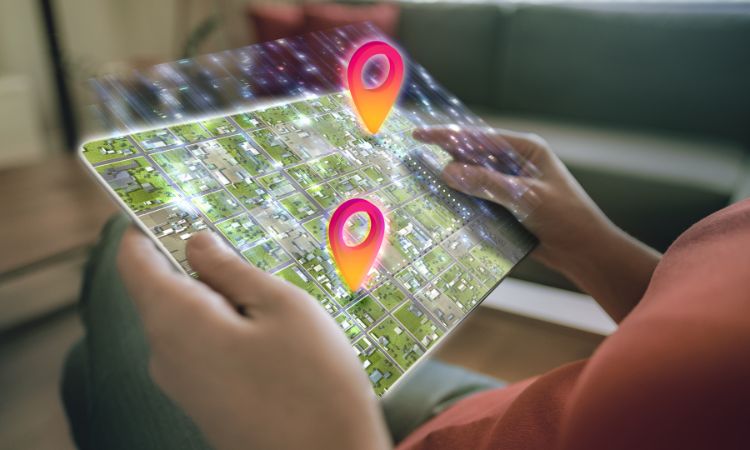Exploring the Digital Map Market: Size, Trends, and Future Outlook (2024-2032)

In an increasingly interconnected world, digital maps have become indispensable tools across various sectors. The global digital map market size is estimated to grow at a compound annual growth rate (CAGR) of 13.90% in the forecast period of 2024-2032, reaching a value of around USD 37.79 billion by 2032. This growth is being driven by increasing demand in the automotive sector and the widespread usage of mobile devices. As we delve into this dynamic market, we will explore its size, share, applications, and the forces shaping its future.
Market Overview
Digital maps, which offer spatial representation and geographic data, have evolved significantly over the past few decades. Initially limited to basic navigation tools, today’s digital mapping solutions provide comprehensive insights, real-time data, and interactive features. This evolution has been fueled by technological advancements, including the rise of GPS technology, mobile computing, and cloud-based services. As urbanization accelerates and industries seek enhanced operational efficiencies, the demand for advanced digital mapping solutions continues to rise.
Market Size and Forecast
The digital map market is poised for robust growth. Analysts predict that the market will experience a CAGR of 13.90%, reaching approximately USD 37.79 billion by 2032. Several factors are contributing to this positive trajectory.
Firstly, the proliferation of smartphones has made navigation and mapping services accessible to a wider audience. Nearly everyone carries a smartphone equipped with GPS functionality, creating a massive user base for digital maps. Additionally, the integration of Internet of Things (IoT) technologies in various industries has further driven the need for accurate and real-time mapping solutions.
Market Segmentation
The digital map market can be categorized into several segments based on type, functionality, applications, and end use.
By Type
- Software Solutions: Digital mapping software is vital for businesses looking to leverage geographical data for decision-making. Leading providers, such as Google Maps and HERE Technologies, are continually innovating, offering advanced features like predictive analytics and machine learning integration.
- Maps: Different types of maps serve various purposes, from topographical maps used in outdoor adventures to thematic maps that illustrate specific data trends. The demand for customizable map formats is growing, allowing businesses and individuals to tailor maps to their unique needs.
- Services: The rise of Mapping as a Service (MaaS) has transformed how organizations access and utilize mapping technologies. Companies can now obtain bespoke mapping solutions that cater specifically to their operational requirements without the need for heavy upfront investments in infrastructure.
By Functionality
- Computerized: Computerized mapping solutions have revolutionized data visualization and spatial analysis, enabling users to interact with geographical data more intuitively.
- Scientific: Digital maps play a crucial role in scientific research, providing valuable tools for environmental studies, epidemiology, and urban planning.
- GPS Navigation: GPS technology is fundamental to modern navigation, facilitating real-time location tracking and route optimization. This functionality is particularly important in logistics and transportation.
By Applications
- Indoor Applications: Indoor mapping solutions are increasingly used in large venues such as shopping malls, airports, and hospitals. These maps guide users through complex layouts, enhancing their overall experience.
- Outdoor Applications: Outdoor digital maps are essential for tourism, hiking, and emergency response services. They help users navigate unfamiliar terrains while providing crucial information about points of interest.
By End Use
- Government and Utilities: Governments leverage digital maps for urban planning, resource management, and public service delivery. Accurate mapping helps in making informed decisions that affect communities.
- Automotive: The automotive sector is one of the most significant drivers of the digital map market. With the rise of autonomous vehicles and smart navigation systems, accurate and real-time mapping solutions are vital for safety and efficiency.
- Others: Emerging sectors, including healthcare and real estate, are beginning to harness the power of digital mapping, highlighting the technology’s versatility and relevance.
Regional Analysis
The digital map market’s performance varies by region, influenced by factors such as economic development, technological adoption, and regulatory frameworks.
- North America: Dominating the market, North America benefits from a mature digital infrastructure and significant investments in mapping technologies.
- Europe: The European market is characterized by stringent regulations regarding data privacy, which shape the development and implementation of digital mapping solutions.
- Asia-Pacific: This region is experiencing rapid growth, fueled by urbanization and a rising middle class, leading to increased demand for mapping services in various sectors.
Competitive Landscape
The digital map market is highly competitive, with numerous players vying for market share. Leading companies such as Google, HERE Technologies, and TomTom dominate the landscape, continuously innovating to maintain their competitive edge. Emerging startups are also making significant strides, often focusing on niche markets or specialized services that cater to specific industry needs.
Future Trends and Challenges
As we look toward the future, several trends are expected to shape the digital map market. The integration of artificial intelligence and augmented reality into mapping technologies will enhance user experiences and operational efficiencies. Moreover, as more industries recognize the value of spatial data, the demand for customized mapping solutions will continue to grow.
However, challenges remain. Data privacy concerns and the accuracy of mapping technologies must be addressed to maintain user trust. Additionally, ensuring that maps are updated in real-time is crucial for sectors that rely on accurate geographical information.




